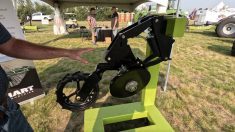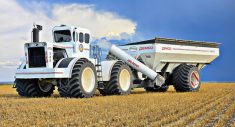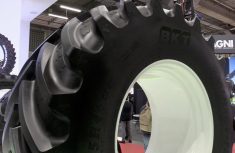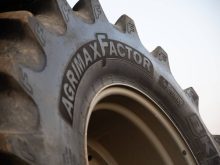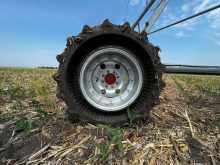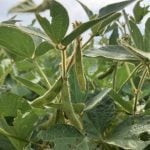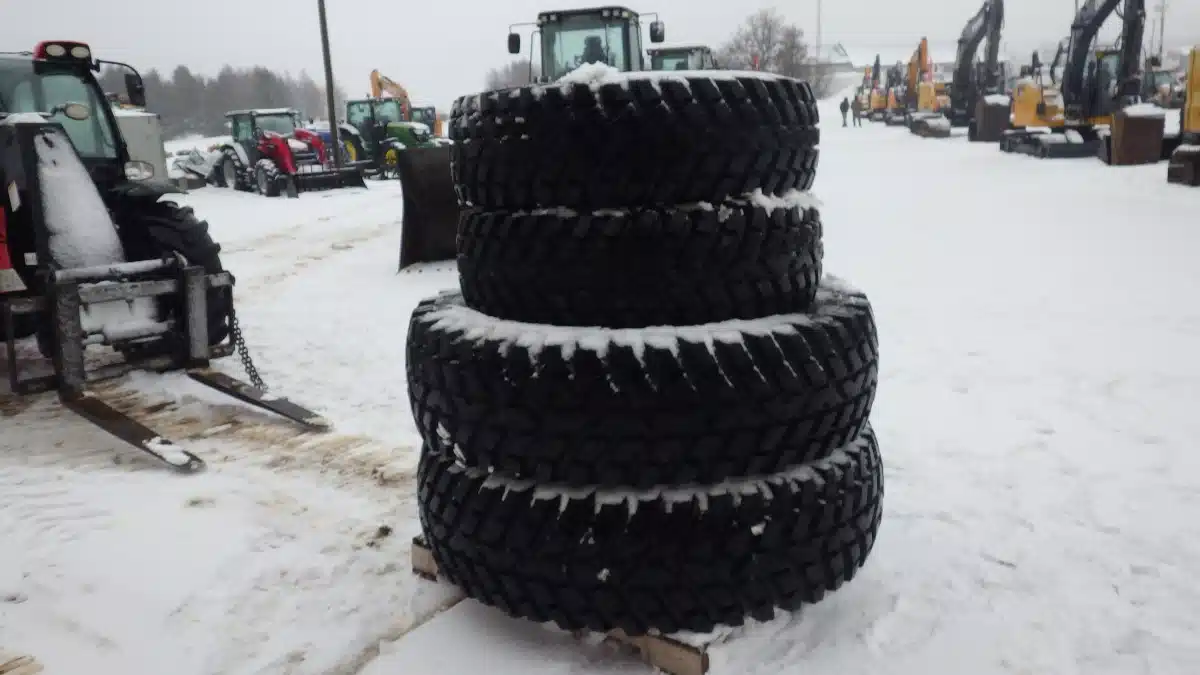Since it was first introduced as an option on agricultural tractors around the 1930s, the pneumatic tire has continued to evolve. Tire manufacturers have since had to keep up with the evolution of farm machines, which have become significantly larger and heavier. They’ve had to come up with new tire designs capable of handling the increased weight and speed, all while minimizing soil compaction as much as possible.
It’s possible to look back at three main stages in the evolution of agricultural tires.
First to appear were tires that used a diagonal (bias) internal reinforcing belt structure, which gives the tire its strength (see Figure 1 below). The bias-ply design has been around since those early days and is still found in some tires today. However, bias-ply tires are mainly used for applications that require the same sidewall strength as the tread, for example on lifting equipment or machines involved in forestry work. But their design isn’t deal for work in farm fields, because they create a lot of ground pressure, which causes more compaction.
Read Also

Claas brings 1000 Series SP forage harvesters to Canada
In mid-August, Claas unveiled its new line of Jaguar forage harvesters at an event in Visalia, California, deep in the heart of that state’s dairy region.

The popularity of Bias tires eventually gave way to radials, which use a laterally reinforced carcass structure (see Figure 1 above). They reduce soil compaction because pressure is distributed more evenly under the tread face.
More modern improvements on the radial design are the IF (Increased Flexion) and VF (Very High Flexion). They use much lower inflation pressures. That not only gives them greater flexibility but allows them to support greater loads at the same pressure (20 per cent additional load for the IF and 40 per cent for the VF). So they offer the advantage of working at a lower inflation pressure, which in turn further reduces soil compaction.
While these tires represent the latest in technology and offer undeniable advantages in the field, they do have certain disadvantages, particularly on the road.
When pulling a heavy load at higher speeds, they can create a loping effect. In extreme situations that can create instability, making a machine hard to control. As farm size has increased and farm machines spend more time travelling on roads at higher speeds, this became a more important problem that needed to be dealt with.
READ MORE: Why fluids have no place in the drive tires on your tractor
Over the past decade, manufacturers have introduced LSW (low sidewall/low profile) tires to counter some of those negative effects of IF and VF types.
LSW tires require a different rim with a larger diameter because the tire sidewall is smaller than a standard tire for the same total tire diameter (see Figure 2 below). This design reduces loping during high-speed travel while still minimizing soil compaction, since it can operate at inflation pressures up to 40 per cent lower than those of a standard radial tire. Because of their improved performance characteristics over other radials, LSW tires also offer a pretty good alternative to rubber tracks in certain conditions.

Recently, manufacturers have also been encouraging producers to consider the importance of operating with the correct inflation pressure on radial tires. Adjusting inflation pressure to match the job, such as increasing it for high-speed travel and reducing it for field operations to minimize compaction, will not only improve tire performance but add to their longevity as well.
On standard radial tires, the inflation pressure should be checked frequently and adjusted according to the work to be done, the load supported and soil conditions. One of the advantages of opting for VF low pressure technology is the fact that the inflation pressure can remain the same whether the tractor is driving on the road, or on dry or wet ground.
The additional cost of VF tires can be worth it for operators who often alternate between the road and the field. Manufacturers are very clear, however, that it is important not to mix standard and low-pressure type tires on the same vehicle since they have different flex behaviours, which would cause serious safety issues at higher speeds.
When using standard radials, an automated on-board inflation system offers a way to quickly adjust inflation pressures to meet the job at hand without the higher cost of more expensive VF tires. The number of automatic inflation systems available, either directly from tractor manufacturers or from independent companies, has grown significantly in recent years.
Optimizing inflation pressure is key to maximizing tire performance and extending the life of all tires. Operating with a pressure that is too high in the field will generate too much wheel slip, increasing fuel consumption by 10 to 20 per cent, and too a low pressure on the road will cause more rolling resistance and increase fuel consumption by about five per cent.
So it’s important to understand that the tire, like any system on today’s tractors, has evolved. Maintaining and operating them properly requires understanding their performance characteristics and paying attention to them.
Translation for Radial image terms (Figure 1):
- Radial = Radial
- Bande de roulement = Tread
- Epaule = Shoulder
- Flanc = Sidewall
- Nappes de somment ou ceinture = Top plies
- Nappe de carcasse = Carcass plies
- Plis de carcasse = Carcass plies
- Nappe interne = Internal plies
- Tringle = Reinforcing rod
- Renfort talon = Bead reinforcement
- Structure interne des napes = Internal design of belts/plies
- Flancs = Sidewall
- Bande de roulement = tread
- Translation for Bias image terms:
- Carcasse a nappes croisees/diagonales = Cross plies in carcass
- Flancs/bande dé roulement = Sidewall/Tread
Translation for Standard/LSW tire image (Figure 2):
- 81 pro diametre total = 81 inch overall diameter
- 38 po haute de le jante = 38 inch rim height
- 46 po haute de le jante = 46 inch rim height
- Pneu standard = Standard tire
- LSW – taille basse profil bas = LSW – Low sidewall, low profile
(Claudia Beaudry is professor of Agromechanical Engineering Technology at Institute of Agrifood Technology of Quebec, Saint-Hyacinthe campus.)




